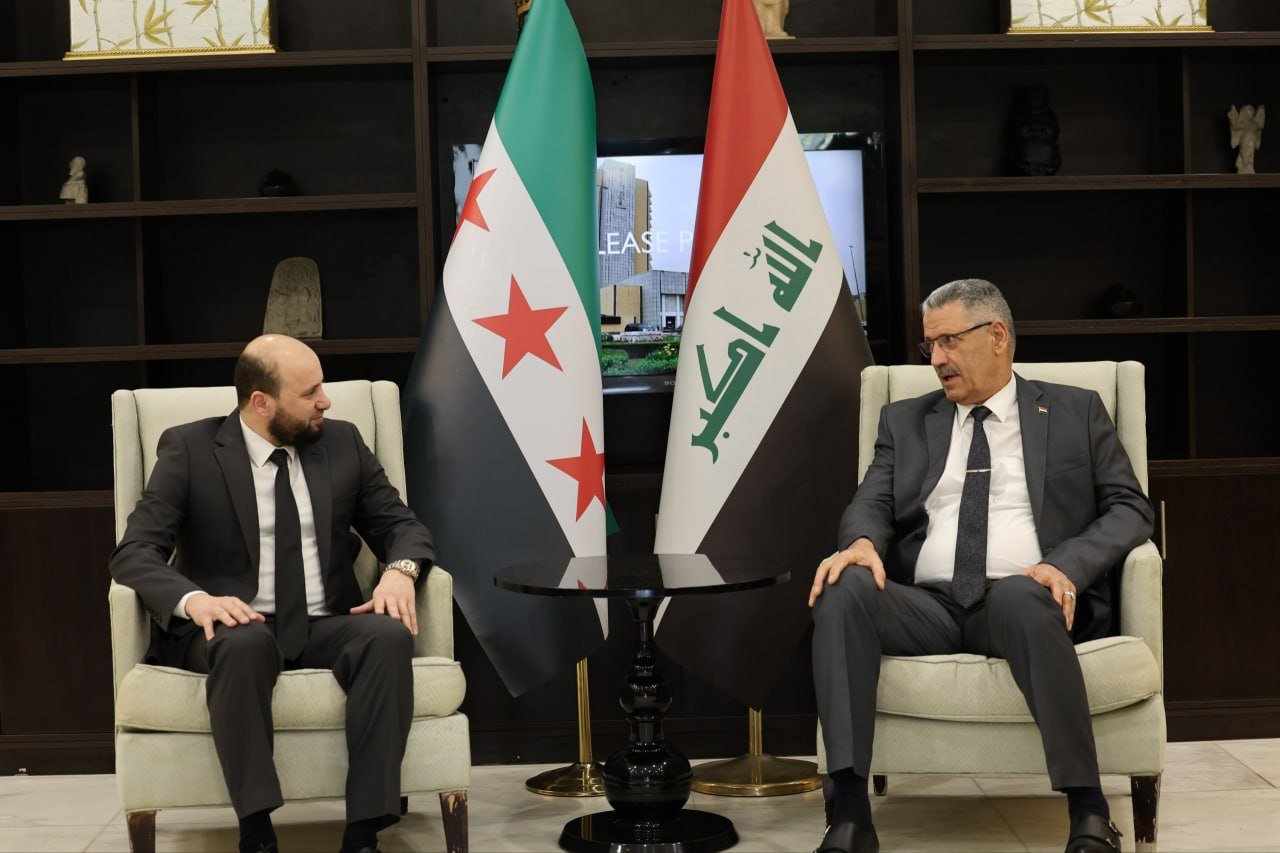Syria and Iraq Revive Talks on Dormant Oil Pipeline As Turkey Presses Iraq for More Favorable Pipeline Deal

Syria’s Energy Minister Muhammad al-Bashir arrived in Baghdad today for talks with his Iraqi counterpart, Oil Minister Hayan AbdulGhani, with the main focus on reviving the Kirkuk–Banias oil pipeline, as Turkey has terminated its agreement with Iraq and is pressing for more favourable terms before signing a new contract for the Iraq–Turkey pipeline.
Context: As Turkey presses Iraq to resume full-capacity exports through the Ceyhan pipeline, the government in Baghdad has opened talks with Syria to revive the long-defunct Kirkuk–Banias line—a route that has been idle since the 1980s. This is not the first time Iraq and the new HTS-led Syrian government have addressed the issue, as Iraqi intelligence chief Hamid al-Shatri also discussed it with Syrian President Ahmad al-Sharaa in April.
Analysis: Baghdad’s interest in the Banias route reflects growing concern over the vulnerability of its southern export channels, particularly in light of the Israel–Iran conflict and potential maritime disruptions. Al-Bashir acknowledged the pipeline’s advanced deterioration, noting it had “reached the end of its assumed lifespan,” and called for a comprehensive technical assessment. AbdulGhani suggested evaluating whether parts of the existing infrastructure could be salvaged or if an entirely new line was necessary.
The project has deep roots. In October 2023—while Bashar al-Assad was still in power—Iraq, under Iranian influence, floated a revival plan and commissioned technical work on the Kirkuk–Baiji–Haditha segment. At the time, Tehran saw the line as a potential sanctions-evasion route, since it traversed areas controlled by Iran-aligned forces in both Iraq and Syria. But today, the political landscape has shifted: Syria’s new government is openly hostile to Iran, and in Iraq, Tehran’s most powerful proxies—the Popular Mobilization Forces—are under sustained U.S. pressure.
Syrian Deputy Energy Minister for Oil Affairs Ghayas Diab highlighted the scale of the task: most pumping stations are “close to disappearing,” and the project would require a full overhaul of pipes, tanks, pumps, electrical systems, and civil works. Talks also touched on laying fibre-optic cables alongside any rebuilt line, with a possible extension to Lebanon. A joint technical team will now survey the route, overseen by a high-level committee headed by al-Bashir.

The Eco Iraq Observatory estimates that repairing the 800-kilometre pipeline would cost $400–600 million—well beyond the current means of either Iraq or Syria. Even an initial inspection using “intelligent pigging” technology would cost $5 million. The observatory’s conclusion is stark: both countries are “financially bankrupt” and unable to fund full repairs or replacement. Its proposed “optimal solution” is for a third country with both capital and technical expertise to finance and build a new, higher-capacity line.
Sceptics warn of political and operational risks. Basra-based oil economist Nabil Marsumi points to Iraq’s poor track record with export pipelines, recalling that Syria shut the Banias line in 1982, Saudi Arabia later closed its Trans-Arabian line, and Turkey has halted the Ceyhan route—each time leaving Iraq stranded. A 2007 Iraq–Syria deal to rebuild the Banias line, involving a Gazprom-linked firm, collapsed in 2009 over cost disputes.
For Baghdad, the Banias talks may also serve as leverage in negotiations with Ankara. Turkey has unilaterally ended the Kirkuk–Ceyhan pipeline operations agreement and now demands flows of over one million barrels per day to keep it operational. The Ceyhan route had been dormant until the Kurdistan Regional Government revived it in 2014 under its independent export policy, prompting Baghdad’s legal challenge in Paris. Flows have been suspended since March 2023.
Whether the oil flows north to Turkey or west to Syria, Baghdad’s strategic aim remains constant: reasserting control over Kurdish crude exports by channelling them through federal infrastructure on federal terms.
The Kirkuk–Banias system, first built in 1934 and expanded over decades to four lines, once gave Iraq a valuable Mediterranean outlet to European markets. At its peak in the late 1960s, it could transport hundreds of thousands of barrels per day. The line was shut in 1982 amid a sharp deterioration in Baghdad–Damascus relations during the Iran–Iraq War, and decades of conflict since have left large stretches damaged or destroyed.
Inside Iraq, the Kirkuk–Baiji segment remains intact with a capacity of up to 600,000 bpd, but the Baiji–Haditha stretch is severely degraded and would need complete replacement to match that capacity.
With southern exports vulnerable and Turkey holding the upper hand over Ceyhan, Baghdad now faces a strategic choice: pursue both the Ceyhan and Banias routes in parallel, or use Banias mainly as a bargaining chip in its high-stakes energy diplomacy with Ankara.









